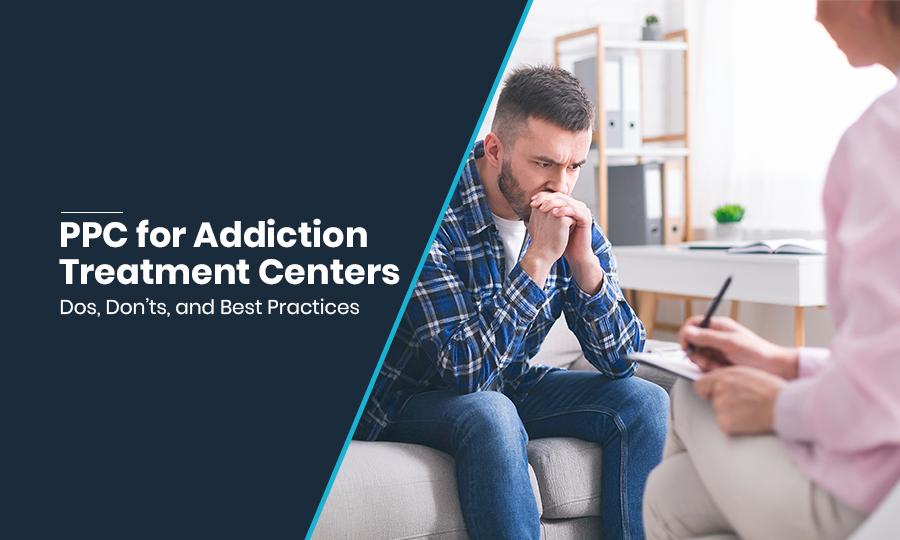Every business aims to improve its search engine rankings, expand its online presence, attract high-quality website traffic, and optimize conversion rates. And rehabilitation centers are no exception. However, one question remains constant. How? This is where PPC for addiction treatment centers comes into play.
Around 74% of brands agree that PPC is a huge driver for their business. These ads can help your addiction treatment center stand out from the highly crowded market. It is a great investment for small rehabs, as you do not have to pay unless you see results. In comparison to digital marketing elements like SEO and SMM, PPC offers immediate results.
This blog will offer a complete guide on how you can set up an effective ad campaign for your business while also discussing the dos, don’ts, and best practices of PPC. So let’s dive in!
Understanding PPC for Addiction Centers
It refers to a paid ad strategy that Addiction Centers can incorporate to develop customized ad campaigns to advertise their practice.
But why PPC? As this platform requires you to pay a fee only when someone clicks on your ads. Basically, it is free until someone clicks on your ad campaign.
For Addiction Treatment Centers, PPC can significantly drive website traffic and encourage potential audiences to book their appointments. When optimized properly with relevant keywords, search engines rank and display these ads at the top of the SERPs.
Search engines such as Google and Bing, and social media platforms like Facebook and Instagram, offer ad opportunities for addiction centers. PPC advertising makes sure that your ad reaches the right audience who are actively searching for addiction treatments.
How Can Using PPC Advertising Benefit Rehab Centers
Now that we have a clear understanding of PPC, let us focus on how it can benefit your business. Because that is what our core objective is, right? So, here are some of the major benefits of using PPC advertising.
- Enhanced Brand Awareness
PPC can greatly help addiction centers to enhance their visibility, reach a broader group of patients, and build strong brand awareness.
This increased visibility can not only help you to promote your products and services but also position your business as a credible source in the healthcare industry.
- Targeted Reach for Prospective Customers
With PPC, you can easily target relevant keywords and demographics, displaying your ads to individuals who are actively searching for addiction treatments. This targeted strategy enhances the probability of conversions.
- Measurable Results
One of the biggest standout benefits of PPC is its ability to monitor and measure results. You will be able to keep track of exactly how many users are clicking on your ads and converting into patients, enabling
- Offers Customizable Options
PPC campaigns let you customize your ads by adding relevant keywords and budget to enhance their performance and maximize conversions. This flexibility ensures that your campaigns remain effective and drive successful outcomes.
- Immediate Visibility
PPC ads can help your practice rank at the top of the SERPs, significantly improving website traffic and authority. This can make all the difference by helping your website attract a higher number of prospective patients.
Setting Up Your PPC Foundation (Applies to All Platforms)
In order to build a solid PPC for addiction treatment centers, it is crucial to claim and verify your business on platforms such as Google, Meta, and Microsoft. However, that’s not it. So, here is a step-by-step guide for setting up successful ppc campaigns that drive results.
Claim and verify your business (Google, Meta, Microsoft)
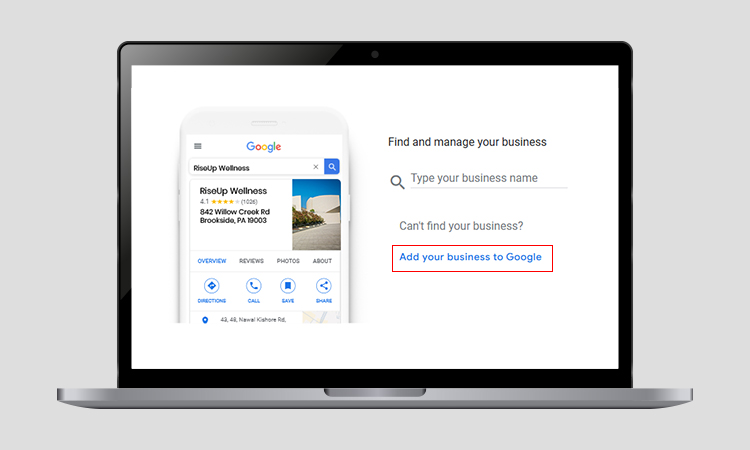
You need to visit this official website http://business.google.com/add > Click on “Add your Business to Google” > Add relevant details of your business > Select a verification option.
In case you already own an unverified Business Profile, you can claim the business profile by following these steps.
Go to Google or Google Maps > In the search bar, enter your business name and city > Go to Google search > click on “Own this business”> click “Manage now > Go to Google Maps> click on “claim this business”> click on “Manage now” >In case you want to choose a different business > click on “I own or manage another business” > Select a verification option.
Search your business on Google > To verify your business, Google offers several options such as video recording, email, live video call, phone or text, or mail > Choose one and wait for at least 5 business days to get verified > After you get verified, you will receive a confirmation email from Google.
- Meta:

- You need to log in to your Facebook account and navigate to https://www.facebook.com/pages/creation.
- In the center of the page, you will find a preview of the page you are about to create.
- You can start by adding all your business information, such as page name, business category, and business description.
- Following that, add your business logo and a profile picture. Don’t forget to connect to WhatsApp.
- After that, you can edit your page information if required.
If you already have a claimed business page on Facebook, you need to request access for it. Here are a few ways you can do it.
You navigate to https://business.facebook.com/settings/pages> Click on “Add” from the drop-down, choose “Request Access to a Page.” Enter your Facebook page name and URL.
Once you are done with selecting the page, use the toggles to choose the permissions you need. If you want to keep your business information up-to-date, it is best to ask for full control. Click on “Request Access” – this request will be displayed in your dashboard as “Pending.”
You need to go to the Business Manager’s security center and click on “Start verification.”
Provide your business information, such as name, address, phone number, and website and confirm your business details. Select a method to confirm your connection (Email, Text Message, Phone, WhatsApp Message, Domain Verification). Lastly, click on “Done” when you are finished.
- Microsoft:

As a first step in starting a Microsoft Ad campaign, you need to visit the website https://www.bingplaces.com/ and click on “Get started.” After that, you can search for your business by typing your business name and location. In the next step, add or edit your business information and verify Your Business.
If your business is already listed, click on “Claim business” next to your business listing and log in with your Microsoft account. Then, claim your business on Bing and edit your business details (if needed)
After you are done adding and editing all the information, it’s time to verify your business. Microsoft offers verification options such as a postcard, phone, email, text message, and web verification. Opting for any of the first four ways will require you to be able to receive a PIN code verification. In case you choose “Web Verification,” Microsoft will ask you 5 questions that only you know; answer all of them correctly to verify your business profile.
Get LegitScript certified (mandatory for Google and Bing for addiction treatment)
When doing PPC for addiction treatment centers, you need to have a LegitScript certification. Now you must be wondering what LegitScript is. Right?
So, here is a comprehensive guide on Legitscript and how to get this certification for your addiction treatment business.
What is LegitScript?
LegitScript certification is a website that validates credible pharmaceutical businesses, addiction centers, and medicine sellers to determine which businesses are legitimate and which ones are scams.
This certification is acknowledged by major platforms like Google and Microsoft to guarantee that your online advertising and practices are legal and valid.
Steps to Get LegitScript Certified
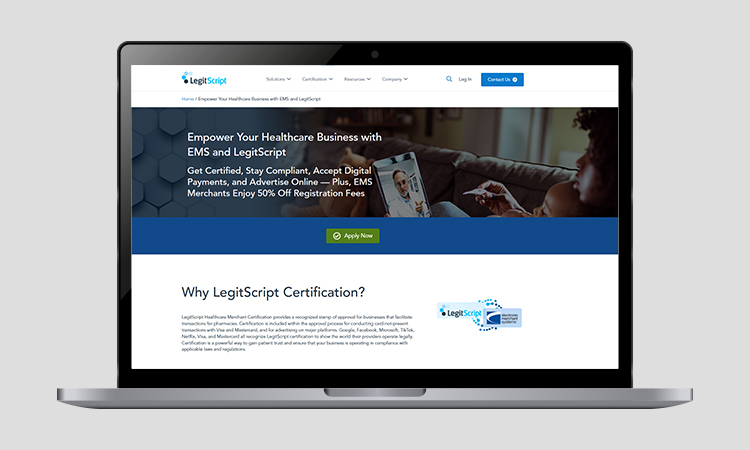
In order to get LegitScript certified on Google and Bing, you need to follow these steps.
- Start by creating an account and applying.
- Now you need to go to https://www.legitscript.com/ems-healthcare-certification/ and “Sign in.”
- In case you don’t have an account, go to “Sign up,” enter your contact information, and create a new account.
- Select the right certification program (e.g., addiction treatment, healthcare products, or pharmaceutical business).
- You are required to pay the one-time application fee.
- After that, you will be provided with a questionnaire including detailed information about your business (compliance measures, operational procedures, and services).
- Make sure to be detailed and accurate in your responses, as this information will be thoroughly reviewed by LegitScript.
- After answering the questionnaire, their analysts will review your application, which may require some background verification of your business’s credibility.
- You may be contacted for additional information or clarification.
- Instantly respond to any requests from LegitSite to accelerate the process.
- If your application is approved, you are required to pay an annual subscription fee to complete your certification.
- Make sure to maintain your certification by adhering to ethical standards and ongoing monitoring by LegitScript.
Install tracking tools:
By implementing tracking tools, you will be able to make sure that your advertising campaigns are successfully reaching your target audience. Here are some of the most common tracking tools that you can use.
- Google Tag Manager
This tool is great for tracking PPC for addiction treatment centers by helping them manage and position website tags without having to adjust their website’s code directly.
- Google Analytics 4
Google Analytics 4 is a tracking tool that successfully tracks website traffic and audience behaviour, offering valuable data for optimizing your ad campaigns.
- Meta Pixel
This code snippet allows businesses to monitor conversions from Facebook and Instagram ads, determine the performance of their ad campaign, and enhance ad targeting.
Create HIPAA-compliant landing pages with clear CTAs and SSL.
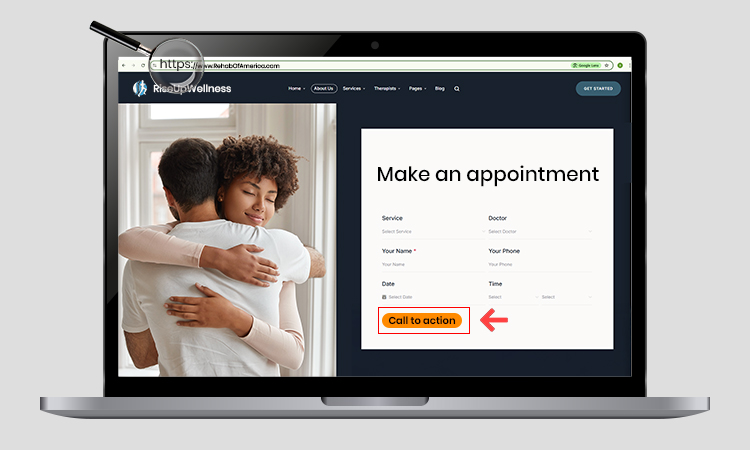
Key steps to develop HIPAA-compliant landing pages:
Secure Hosting and Data Encryption
- You need to choose a hosting provider that offers HIPAA-compliant services such as secure servers and data encryption.
- Make sure your website uses HTTPS protocols to encrypt data transmission and safeguard user information from being blocked.
- You can update your website’s security measures regularly to prevent infringements and maintain the integrity of your data.
Craft HIPAA-Compliant Forms
The forms of your landing page must be encrypted and designed properly to safeguard any personal health information (PHI) submitted.
- Reduce the information you gather on your landing pages.
- Do not ask for irrelevant details like medical history or health concerns in forms.
- Incorporate multi-step forms, gather non-PHI information (Physical Health Information) such as name and contact number in the first step, and let users provide their health-related information later in the process.
- Be transparent and inform users about information collection practices and the confidential handling of data.
Develop Clear and Concise Content
- Use simple and direct sentences to describe your services and avoid complexities.
- Emphasize the USPs of your services and treatments to build trust among prospective patients.
- Incorporate clear and engaging CTAs such as “Call Us Now for a Consultation” or “Book an Appointment Today!’ to make users take action.
Privacy Policy and Terms of Service:
Develop a complete privacy policy that clearly defines how information from users will be collected, implemented, and protected. Make sure your privacy policy is easily readable and accessible on your landing pages.
Ensure adding a terms of service document that summarizes the terms of using your treatments and services.
Business Associate Agreements (BAAs)
- In case you use third-party services such as email marketing and analytics, make sure that they have BAAs in place to safeguard your patients’ PHI (Physical Health Information).
- Confirm that your payment processors and hosting provider have “BAAs” with your clinic.
Tracking Conversions:
- As a rehab PPC company, you must use advanced tools like Google Analytics to monitor conversions effectively. But don’t collect PHI by implementing these tools.
- Utilize Google Enhanced Conversions with a back-end integration to enhance attribution while ensuring HIPAA compliance.
Conduct Security Audits and Training
- Conduct security audits regularly to recognize and address potential vulnerabilities.
- Provide necessary HIPAA training to all your staff who handle sensitive information or patient data.
- Create a thorough process for reporting and dealing with potential HIPAA violations.
Google Ads for Addiction Treatment
Are you looking to tap into a wider audience? Simply set up a Google ad campaign.
Seriously, this ad platform has a reach of over 90% of Internet users across the globe and offers advertisers an average of $2 in return for every $1 they spend on Google ads.
This section of the blog will provide a comprehensive guide on how addiction treatment centers can successfully set up their accounts on Google Ads.
- Step-by-Step Setup
As the first step of setting up your Google Ads account, go to Google Ads and click on “Get started.”
In the next step, Google Ads will ask you to add relevant business information. Add all the necessary information, including business name, URL, contact number, and billing details.
Once you are done with these steps, you are ready to start a Google Ads campaign that will promote your rehab center.
- How to create a campaign: keyword vs display vs call-only.
For establishing effective PPC for addiction treatment centers, it is important to create an ad campaign. So, here is a brief comparison of the three types of campaigns.
- Keyword Ad Campaigns
Objective: Effective for boosting sales, traffic, and getting quality leads to your site.
Targeting: Keywords that are closely related to your business and align with the user search queries.
Ad Format: These are text-based ads that show up on Search Engine Result Pages (SERPs).
Bidding Strategy: Cost-per-click based on the competitiveness of keywords.
Best Practices:
- Perform thorough keyword research to find out relevant terms.
- Incorporate different match types, including phrase, broad, and exact, to manage ad visibility.
- Create engaging ad copies that showcase your USPs.
- Keep track of keyword performance and adjust your targeting and bidding strategy accordingly.
- Display Ad Campaigns
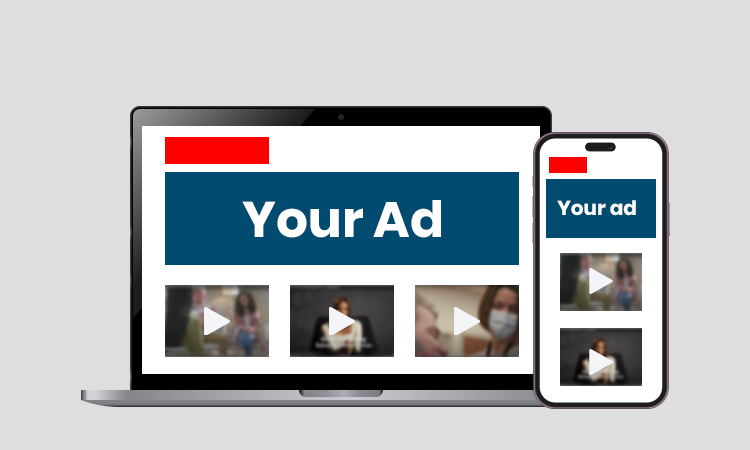
Objective: Maximize brand awareness and reach a broader group of audience.
Targeting: Targets the audience based on interests, demographics, and remarketing lists.
Ad Format: This ad format includes images, videos, and ad media displayed on the Google Display Network (GDN).
Bidding Strategy: Cost-Per-Mille or Cost-Per-Click based on the campaign settings.
Best Practices:
- Craft memorable and captivating ads to make your patients aware of your business and services.
- Use a variety of ad formats to complement different placements.
- Target specific audiences beyond search results while they are browsing apps or websites.
- Incorporate remarketing to re-engage with patients who have previously interacted with your website.
- Call-only Ad Campaigns
Objective: Get direct phone calls from prospective patients.
Targeting: Targets patients according to time of call, location, and device used.
Ad Format: Text-based ads that include a relevant phone number,
Bidding Strategy: Cost-per-call or cost-per-click, depending on the settings of your campaign.
Best Practices:
- Develop enticing and informative ad copies that encourage patients to call
- Use clear and concise CTAs such as “Call now” or “Book an appointment today!”
- Ensure that you are using a valid and easily accessible phone number
- Implement call tracking methods to closely monitor campaign performance
- Run campaigns during business hours when you are accessible and can promptly answer the calls.
Recommended campaign type: Search with call extensions.
After you are done creating a campaign, it is time to choose the right type of campaign. As an addiction treatment center, call-on ads can be the ideal type of campaign for your business.
These are a type of paid advertising on Google that is designed to help you get more phone calls. While other types of ad campaigns direct the audience to a landing page, call-on ads do not. Instead, these ads comprise a call-to-call link so when patients click on that link, their device automatically connects to your business.
Call-on ads are hassle-free and are great for reaching audiences who are seeking immediate services. For example, if someone is suffering from asthma, you don’t want to waste your time navigating through different websites to search for the best asthma hospitals. You will probably call the first hospital that pops up on your search results.
Phone calls are crucial in the healthcare industry, where people often search for immediate treatments in case of emergencies.
- Geo-targeting for local/state reach.
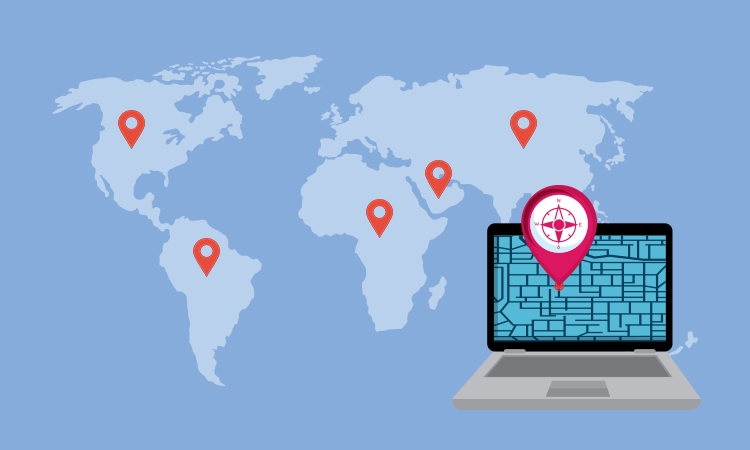
As a rehab center business, you must be very careful when choosing your target patients.
Google Ads targeting allows you to reach the geographical locations you have selected. By focusing on advertising your services and treatments, Google Ads can help you find the right patients.
However, before setting up the location targeting, you must consider how specific you want your settings to be.
By implementing Broad geo targeting, you can not only reach patients who are based in your chosen target locations but also audiences who have shown interest in your business.
The major standout feature of geo-targeting is that this type of targeting helps businesses capture the most clicks, impressions, and conversions in comparison to other types of targeting.
- Setting up ad schedules to match peak call times.
To effectively use Google Ads for addiction treatment, especially when aiming to coincide with peak call times, it is important to set up ad schedules that perfectly align with your prospective patients who are most likely to be making a call. Here is a holistic strategy for setting up your schedules in Google Ads.
Step 1: Evaluate your call reports to identify the dates and times when you are receiving the most calls. This is essential to determine when your prospective clients are actively looking for services or treatments similar to yours. Make sure to understand the patterns in call volume throughout the week to pinpoint the peak hours.
Step 2: Log in to your Google Ads Account> Go to the campaign you want to modify> Navigate to the “Audiences, Keywords, and Content” section> Click on “Ad Schedule.”
Select “Ad schedule”> click on the pencil icon to edit the ad schedule> choose the specific date and time you want to run your ads based on your call data analysis.
Note: You can choose up to six schedules per day, per campaign. In case your peak hours prologue the next day, you will be required to create different schedules for each day.
Step 3: Review your ad schedules regularly to see if they are driving desirable results. Keep track of key metrics such as impressions, click-through rate, cost-per-click, and budget.
If required, modify your ad schedules to ensure your ad is reaching the right audience during their most active times and get the most out of your ad campaigns.
- Keyword Strategy
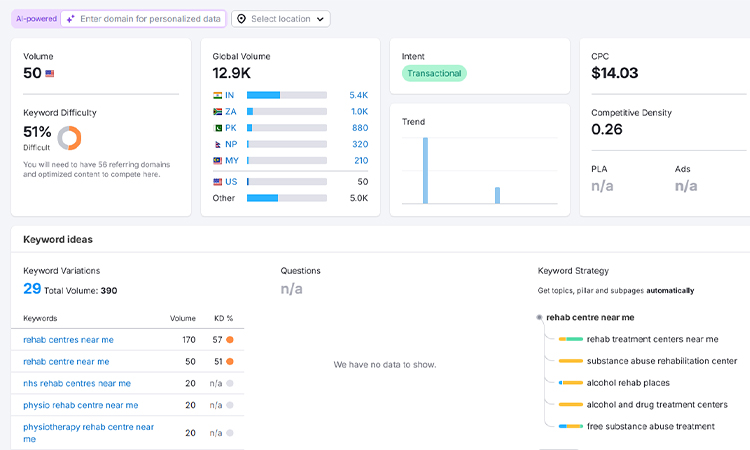
Developing an effective keyword strategy for addiction treatment centers should focus on high-intent terms, with an emphasis on negative keywords to avoid meaningless traffic, and the implementation of advanced tools. Create an effective keyword strategy for your ad by following these steps.
- Focus on high-intent terms: “rehab near me,” “alcohol treatment center,” etc.
Use high-intent terms such as “rehab near me” and “mental health care clinics” to indicate a patient’s immediate need for treatment.
- Use negative keywords to avoid irrelevant clicks.
Negative keywords are certain keywords, phrases, or terms that prevent your ad campaign from reaching patients or appearing for search queries that are not related to your rehab center. For example, “free rehab,” or “jobs at addiction centers,” to avoid irrelevant clicks and wasted ad spend.
- Tools: Google Keyword Planner, SEMrush, Ubersuggest.
Leverage keyword research tools such as Google Keyword Planner, Semrush, and Ahrefs to find out relevant keywords and get data on search volume, keyword competition, and related keywords.
- Ad Copy Best Practices
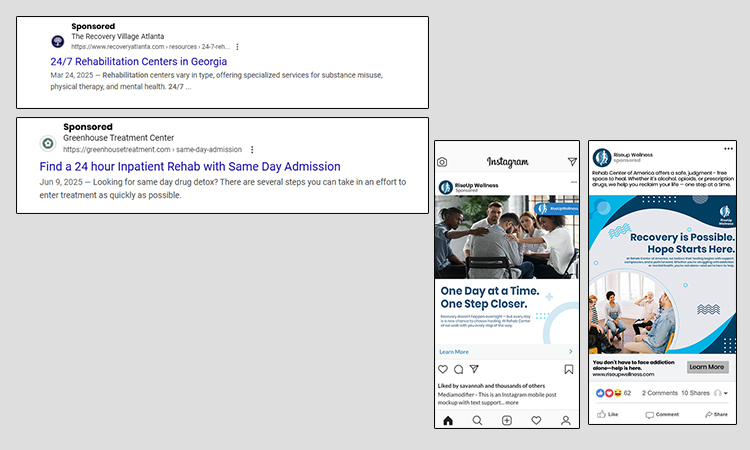
Here are a few tips and tricks for crafting compelling Google ad copies for your business.
- Avoid Misleading claims
The most crucial thing that you must keep in mind when creating an ad copy for your business is, DO NOT use anything false, exaggerated, or upsetting in your ad copy. These messages not only hurt the sentiments of your patients but also make them lose their trust in your business.
Avoid using misleading claims such as “Cure your addiction in just 30 days” or “Say Goodbye to your alcohol addiction with our Rehab Center” for the sake of getting a few more clicks, because these can lead to serious consequences. Clickbait is often quite satisfying to see, but its charm diminishes over time, leaving a negative impact on your business.
- Emphasize benefits: “24/7 Admissions,” “Insurance Accepted.”
For successfully setting up PPC for addiction treatment centers, emphasize the benefits of your services and treatments rather than your features. You can be all excited to showcase how your services are different from others, how much easier it is to use them, but here you are stressing your products or services rather than understanding what your audiences want.
For example, you have launched a new smartphone and you only highlight the best features of it rather than how it would benefit your audiences. This can lead to a major drop in your sales. So, make sure when your patients ask you, “How is your service beneficial to me?” you should be able to come up with a convincing answer.
- Use ad extensions: sitelinks, callouts, structured snippets.
Implementing ad extensions can enhance the performance of your ad copy, as these offer additional opportunities to satisfy prospective patients through copy. There are numerous ad extensions available, each serving different purposes. In this blog, we will discuss a few of them.
Sitelinks:
Sitelinks are additional texts or links that can appear with an ad copy. Preferably, these assets should be used to add extra information to the primary ad copy in the ad group. These perform as in-site navigation, but directly in the Search Engine Results Pages.
Callouts:
Callouts are basically a line of text that is not longer than 25 characters. These texts can be leveraged for everything that helps support the ad.
Akin to sitelinks, this text should be complementary but must not repeat the content of the original ad. These can include a quick list of benefits, features, or additional information that did not fit in the ad content.
Structured Snippets:
Structured snippets enable you to create a list within an ad extension. Choose the header you want to start the list, then start adding the values below each of 25 characters.
- Dos & Don’ts
Now that we have discussed the steps to set up an ad campaign, conduct a thorough keyword strategy, and craft compelling ad copies, let us now look into the things you should do and the things you should avoid to create a high-performing ad campaign.
- Do use call tracking
By incorporating call tracking methods, you will be able to closely monitor which ads and keywords are generating phone calls, offering valuable data about your campaign’s performance and lead generation. - Don’t use vague or emotional manipulation
Avoid using complex, unclear, and disturbing language in your ad copy. Make sure your ads are respectful, professional, informative, yet engaging. - Do test A/B copy weekly
Experiment with different ad copy variations frequently. This will help you enhance your ad performance by recognizing the messaging that is most effective for your potential patients. - Don’t target broad keywords without modifiers
Oftentimes, broad match keywords lead to irrelevant traffic and wasted ad spend. Using specific keyword modifiers such as “near me” or “in Canada” can guarantee that your ads are shown to the right audience.
Microsoft/Bing Ads Strategy
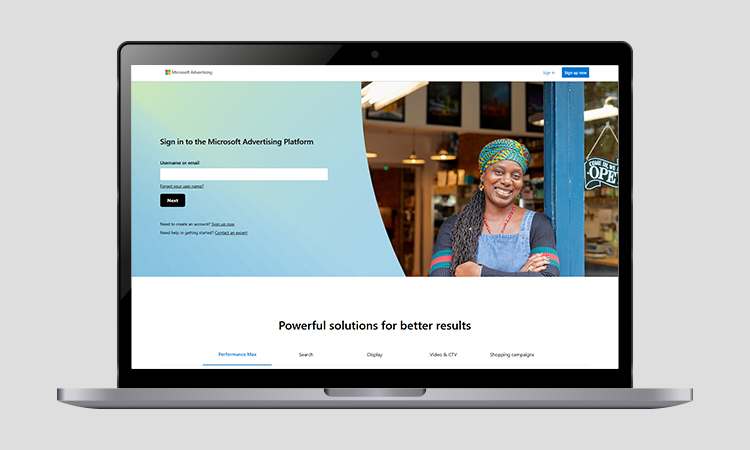
In order to successfully set up a Microsoft/Bing ads strategy similar to your Google ads structure, here are a few steps you must follow.
- Ad Account Set up and Campaign Import
Start by setting up your Microsoft Advertising Account, formerly known as Bing Ads. In case you don’t already have an account, click on “Sign up.” The signing-up process is absolutely free, and you can use an existing email address to do so.
- Navigate to Microsoft Advertising> Click on “Sign up now” to register.
- On the second page, click on “Create One” to set up your new Microsoft Advertising account.
- You will need to provide some basic details, such as your business name and address, and agree to the Terms of Service to successfully create an ad account.
- Import campaigns from Google Ads directly.
- If you already have a Google ad campaign that you want to run on Bing, then navigate to the top menu> click on “Import”> Select “Import from Google Ads”> Sign in to Google.
- After you are done with that, go to “Choose Accounts”> Select the account from which you want to import an ad> Click “Next.”
- If you are okay with importing your Google ads without any modifications, name the imported campaign and hit “Start Import.” If you wish to tweak your bids or bidding strategies, click on “Customize Report.”
- Once you are done importing your desired ad campaigns, run a detailed review to see if all the details you have provided are correct.
- Make necessary adjustments, and you are all set!
- Similar keyword/campaign structure to Google Ads
- Copy the campaign, keyword structure, and ad group from your Google Ads within Bing Ads.
- Perform thorough keyword research, especially focusing on the specific audience that uses the Bing search engine. You can also implement the built-in keyword planner tool of Microsoft Advertising to determine relevant keywords that might have less competition.
- Create engaging and personalized ad copies that perfectly align with the interests and concerns of the Bing audience. Utilize demographic targeting options that Bing offers to boost your reach.
- Make sure your landing pages are well optimized for the keywords and ad copy that you have used in Bing Ads. They must match your overall campaign objectives.
- Lower competition, cheaper CPC.
In comparison to Google Ads, Bing Ads has a lower competition level, with a very small number of advertisers competing with bids for keywords and optimal placements.
Benefits of using Bing Ads:
- High-visibility placement in the same budget.
- Has a lower Cost-per-click (CPC) rate.
- Use Bing’s demographic targeting to refine reach
By implementing Microsoft’s targeting options, you will be able to reach the right audience without any hassle.
- Demographic Targeting: This targeting option targets patients based on Age, Gender, Location, and so on to help your ad campaign reach the most relevant patients.
- Audience Targeting: By leveraging this targeting option within the Microsoft Audience Network, you will be able to reach users based on their interests, concerns, demographics, and browsing patterns.
- Location Targeting: This particular targeting option allows you to reach patients within your chosen proximity. Simply specify the geographic location where you want your ads to appear.
- Device Targeting: Bing’s device targeting option can help you target your audience based on the type of device they are using to search for your products or services. (e.g., mobile, tablet, or desktop).
- Must still comply with LegitScript and platform policies.
Similar to Google Ads, Bing Ads also requires ads to comply with LegitScript and platform policies. If your field of expertise is healthcare or pharmaceuticals, it is crucial to get LegitScript certified before you run your ads on Bing.
Get familiar with the policies and guidelines of Microsoft Advertising to make sure your ads align with their platform policies. Furthermore, closely monitor your ad campaigns to make sure they are compliant with all relevant guidelines and policies.
Facebook & Instagram Ads (Meta Ads)
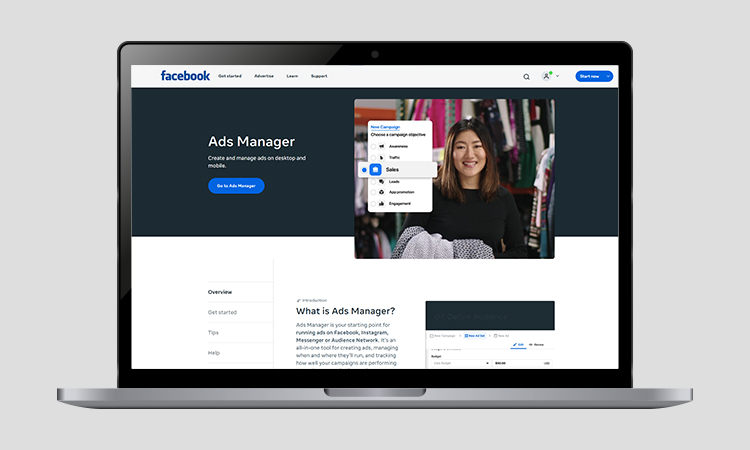
- Understanding Meta’s Policy on Addiction Treatment
- Ads must not promote personal stories or imply recovery guarantees.
If you want to set up effective PPC for addiction treatment centers, avoid creating ads that strongly emphasize personal success stories and claim guaranteed recovery.
Rather, develop ad content that is not only captivating but also offers precise information regarding a particular disease and its treatment.
- No before/after images or emotionally exploitative content.
Do not use before/after images of your patients in the ad campaign, as it can upset your patients and hurt their sentiments.
- Must be certified if promoting treatment centers
When promoting your rehab center, make sure it is certified by LegitScript and previously approved by Meta before advertising. Your ad campaign must be compliant with Meta’s overall Community Standards.
- Step-by-Step Paid Ads Setup
- Campaign objectives: Qualified Leads, Calls, or Conversion rates.
Before setting up a paid ads campaign on Meta platforms, make sure to determine what you want to achieve through your ads. Do you want to generate high-quality leads or do you want to boost your appointment bookings? Ensure that your advertising goals correspond to the desired outcomes.
- Set up custom and lookalike audiences (past website visitors, form fills)
Leverage the data of your existing patients, such as form fill-ups and past website visitors, to develop hyper-focused ad campaigns. Meta Platforms offers “lookalike” audiences that can help you target patients with similar interests to your existing patient base.
- Use retargeting for users who visited treatment-related pages.
Re-engage patients who have previously interacted with your website, visited your service pages, or shown their interest in your addiction center.
- Creative & Copy Tips
Ad copy is the most crucial thing businesses must focus on when creating an ad campaign.
- Use compassionate but informative language
Addiction treatment center businesses must use language that is not only informative and insightful but also empathetic. For instance, we cannot use phrases such as “Special Discounts” in an ad copy, especially designed for addiction patients. Make sure you choose the right words and stress on keeping your language compassionate to avoid hurting the sentiments of your target patients.
- Videos: Testimonials (only if HIPAA-compliant), facility walk-throughs
Create HIPAA-compliant testimonial videos and walkthrough videos of your facility, showcasing the process of your treatments and hygiene guidelines to foster trust and transparency among your target patients.
- Imagery: Safe, neutral, calming visuals
Leverage neutral, safe, and appeasing visuals that promote a sense of hope and healing among your target audience.
- Dos & Don’ts
- Include necessary and basic information, such as name, contact details, and email, in contact forms so that patients can easily fill them out.
- Avoid using manipulative phrases such as “You are broken,” “You failed,” or any other negative language that can upset or trigger your target audience.
- Make sure your advertisements are well-optimized for every type of device, especially mobile.
- Do not run ads without creating proper privacy-compliant landing pages.
- Evaluate the results of your campaigns and adjust your strategy based on what is working and what is not.
- Lastly, avoid using clickbait tactics or incorporating misleading information in your ad copies.
Tracking & Optimization for DIY PPC
Tracking and optimizing campaigns is very crucial when it comes to Meta ads. Here are a few ways you can monitor and optimize for DIY PPC.
- Install conversion tracking (calls, forms, chats)
Incorporate custom conversion and tools like Facebook pixels to track phone calls, the number of form submissions, and chat interactions.
- Use UTM parameters for SEO/PPC campaign analysis
By leveraging UTM parameters in ad URLs, you can get a precise analysis of how your campaign’s progress in Google Analytics.
- Weekly review of:
Review KPIs such as cost per conversion rates, bounce rates, and keyword performance from Google Analytics to figure out areas of improvement.
- Split test ads and landing pages monthly
Conduct monthly tests for split ads and landing pages to see if they are driving results and optimize them for better outcomes.
SEO & PPC Synergy Tips
- Use PPC data to refine SEO keyword targets.
Incorporate the feedback from your PPC campaigns to enhance your SEO strategy. This includes performance metrics such as conversion rates and click-through rates (CTRs) to pinpoint high-performing keywords.
Use these data to modify your organic SEO strategy. Contrarily, organic SEO can offer some long-tail keywords with less competition but a strong intent that can be incorporated into your PPC campaign to improve ad targeting.
- Add PPC-tested headlines to title tags/meta descriptions
Want to keep your audience hooked? Get creative, but do not forget your audience and their data. Use synonyms or discreetly different terms with high CTRs from your PPC ad’s headings into title tags and meta descriptions to capture the attention of your patients.
- Retarget organic visitors with PPC offers (rehab guides, insurance forms)
Not every visitor converts into loyal patients after the first interaction. By offering retargeting to organic visitors with offers such as rehab guides and insurance forms, you will be able to re-engage with the patients who have previously shown interest in your business.
By combining retargeting advertisements with your SEO efforts, you can retain users who have come to your website organically but did not convert.
- Run local SEO + local PPC hand-in-hand (Google Business Profile + location ads)
Use PPC data for SEO keyword Refinement
- Assess which keywords are bringing the most clicks and conversions in your PPC campaigns.
- Identify keywords that are driving high CTRs and conversions, signifying strong interests of your audience.
- Integrate these high-performing keywords in your website’s content, meta titles, and descriptions to enhance organic traffic.
- For instance, if your PPC campaign for “Best Addiction Treatment Centers in Manhattan” is driving successful outcomes, consider implementing that phrase in your content and meta descriptions to maximize website traffic.
Local SEO and PPC Incorporation
- Make sure your Google Business Profile is fully optimized and contains relevant information, short and informative descriptions, and high-resolution images.
- Craft location-based PPC campaigns that target the audience within a proximity of your business.
- When patients search for your business or similar services in your area, both your local SEO and PPC ads will pop up, boosting visibility and bringing traffic.
Compliance and Ethical Advertising
To effectively do PPC for addiction treatment centers, you should make sure to advertise your business ethically on Meta ad platforms such as Instagram and Facebook. Here are some major areas you must focus on.
- Highlight the importance of HIPAA, LegitScript, and state laws
For businesses, especially businesses in the healthcare sector, HIPAA is mandatory. This signifies safeguarding Patient Health Information (PHI) by avoiding unauthorized sharing of PHI, prioritizing data privacy, and getting prior consent when using PHI for marketing purposes.
LegitScript Certification is a must for businesses in certain industries like pharmacies, healthcare, and rehab centers. It makes sure that your business is ethical and meets the highest standards of legitimacy.
Make sure your ad campaigns follow state-specific rules and regulations on advertising and data privacy. Remember, these laws may differ from state to state.
- Always have privacy policies and disclaimers
For addiction centers, it is crucial to always mention transparent privacy policies, both on their websites as well as in their ad copies. Use disclaimers to highlight the nature of your treatment or services and any limitations on guarantees.
- Avoid making promises like “guaranteed recovery.”
Do not include misleading, exaggerated, and false claims like “Guaranteed recovery” or “Risk-free” in your ad campaigns, specifically when you are creating copies for healthcare or medicine.
Tools & Resources for DIY PPC Management
Now that we are done discussing the steps to set up ad campaigns, the dos and don’ts, targeting methods, and more. Let us now see some of the tools you can implement for DIY PPC Management.
- Keyword Research: SEMrush, Ahrefs, Google Planner
SEMush is a platform that offers a complete range of tools to simplify the process of keyword research, including keyword tracking as well as competitor analysis.
Ahrefs is popularly known for its strong keyword research abilities, backlink analysis, and keyword difficulty checking abilities.
Google Planner is a free tool that allows businesses to search for relevant keywords and identify search volume.
- Landing Pages: Unbounce, Instapage
Unbounce allows users to design high-converting landing pages for their PPC campaigns.
Instapage is a platform where businesses can create and optimize their landing pages according to their will.
- Call Tracking: CallRail, Twilio
CallRail is an ideal platform for businesses that are willing to track their phone calls. This platform offers call tracking and analytics, allowing users to determine which of their PPC campaigns is driving the calls.
Twilio offers users a space to establish custom communication solutions such as call tracking.
- Compliance Tools: LegitScript, Termly.io
Termly.io is a very useful tool, especially for businesses in the healthcare sector. This platform enables users to draft their privacy policies and terms of service.
LegistScript is a certification that ensures that every business adheres to the advertising regulations and guidelines of various platforms.
Why Partner With a PPC Management Company?
Partnering with a professional PPC agency for addiction treatment centers can not only help them develop high-performing PPC ads but also reach a wider group of patients. Here are some of the major reasons why rehab centers must take up PPC services.
- Time Saving
PPC management is a lot of work. It requires regular monitoring and optimization, bid management, keyword research, and more. An efficient PPC agency manages these time-consuming tasks, allowing your team to focus on high-priority tasks.
- Advanced Reporting Tools
PPC agencies leverage modern tools for thorough performance tracking, competitor analysis, and data-driven decision making. This allows them to pinpoint areas of improvement, boost their Return on Investment (ROI), and optimize their campaigns.
- Revenue Management
Through effective campaign optimization and increasing conversion rates, PPC management companies allow businesses to drive more leads and sales, eventually leading to higher profit rates.
- Constant PPC Support
Agencies offer ongoing support, keep track of campaigns, and make modifications wherever necessary to guarantee excellent performance and adaptation to the rapidly changing market conditions. They provide a meticulous partnership, helping businesses to stay ahead in the competition and achieve their marketing objectives.
Frequently Asked Questions (FAQs)
For choosing the right keywords for a PPC ad campaign, you need to consider what can likely interest your audience from “people also search for” or implement smart tools like Google Keyword Planner to choose the right keywords for your PPC campaign.
To efficiently measure the success of your PPC ad campaign, emphasize key metrics like conversion rate, click-through rate (CTR), cost per acquisition (CPA), quality score, and return on Ad spend (ROAS).
A business can run a large number of campaigns at once. For instance, Google Ads allows up to 10,000 ad campaigns to function simultaneously.
The time ad campaigns will take to show results can vary greatly. However, you can expect to see preliminary results within a few days or weeks.
Conclusion
Successful PPC for addiction treatment centers can be a monumental step forward in capturing the attention of more patients and maximizing conversion rates.
Starting from establishing clear goals to effective keyword research, developing high-converting copies, and targeting the right patients, choosing the right PPC services can not only help you drive more conversions and clicks but also reach your website to a much broader patient base.
However, you cannot just set it and forget about it. It requires constant tracking and optimization to make sure they remain effective and provide the best possible results.



























